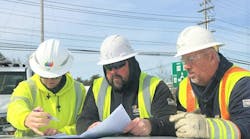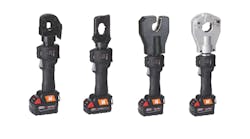Three years ago, a dog was electrocuted after touching an energized metal streetlight handheld cover. After this incident, Seattle City Light began to explore methods to test its aging underground distribution system for contact voltage, also known as stray voltage.
The project management team identified two different methods to test for contact voltage: manual detection and mobile detection. The team members wanted to ensure the program provided the maximum benefit in terms of public safety improvement, which meant that the detection method they implemented had to identify the largest number of failures generating contact voltages. The team proposed a side-by-side test of the two approaches, ultimately selecting the mobile survey process. As a result of its careful evaluation, Seattle City Light has achieved an excellent safety record.
Identifying the Cause of Contact Voltage
As is the case in nearly all infrastructure systems, decay of the electric distribution system takes many forms. In the case of underground distribution, degraded insulation can cause high impedance electrical faults, which energize street-level objects. This phenomenon is known as contact voltage. These faults generally draw only a few amps and, therefore, are not at a current level that would operate protective devices such as fuses or limiters. Without proactive detection and mitigation, however, these faults can persist indefinitely, placing the public at risk.
Contact voltage can be sourced from faults at any point along the length of a buried cable. Virtually anything could be energized by a cable fault. It is not uncommon to find energized sidewalks, cement, patches of grass, fences and benches during a testing cycle. For a testing procedure to be effective, it must test all conductive surfaces within the vicinity of the cable.
The level of voltage that is found on a given object is proportional to the impedance of the fault pathway. The more conductive (lower impedance) a particular pathway is, the higher the voltage found on the object. Voltage levels vary with the path or “fault impedance” and can change as the conditions around the fault change. For example, it is not uncommon for the voltage to increase from 1 V to 2 V to voltages close to line voltage after a rain or snow storm. This variable nature requires that detection devices are sensitive to the smallest voltages.
Taking a Dual Approach
After careful review of the proposals submitted from several vendors, Seattle City Light decided on a combination of manual detection and mobile survey. The plan was to divide the operating territory in half. Mobile survey would begin in the south side of the city and manual detection would begin in the north. By using both testing methods concurrently, the utility could gain valuable insight into which method provided the greatest performance and safety enhancement.
Seattle City Light ultimately selected the HD-LV-S-5 tester from HD Electric for the manual detection program. This tester is specified to light when placed in contact with an object energized at 5 VAC or more. It would be impractical to require manual technicians to touch every conductive surface, so an asset list including utility-owned assets such as streetlights and manhole covers was generated and supplied to HD Electric Co. The initial plan included testing of about 42,500 pieces of electrical equipment associated with the streetlight fixtures, and all the metal vault lids throughout the city of Seattle, that covered 1721 linear miles, all in a two- to three-week period.
The company selected Power Survey Co.'s SVD2000 for the mobile test program. This system is specified to detect objects energized with as little as 1 V at a distance of 30 ft. This methodology tests all conductive objects within 30 ft of the vehicle route. An outline map of the area to be tested, which was about the same size as the manual area, was provided to the selected vendor. The initial plan included testing all surfaces and structures within the mapped area. The duration of the test activity was planned to be two to three weeks, using two SVD2000 systems.
Investing in Mobile Testing Program
With both the manual and mobile testing programs kicked off at about the same time, Seattle City Light was able to make frequent and direct comparison to the results of each mode of test.
Some conclusions came much faster than expected. One would expect mobile survey to find not only utility assets such as manhole covers, junction boxes and streetlights, but also to find other objects such as sidewalks, fences and mailboxes energized by faulty underground distribution lines. Similarly, it was thought that manual detection would accurately test the assets listed in the test requirements.
After two weeks of testing, the trend in the findings became clear. The mobile test program had uncovered 158 cases of contact voltage. Meanwhile, in the same time period, the manual testing program found no energized assets. The utility expected the mobile test method would be more comprehensive because of its ability to test all objects and surfaces in its path. But when comparing the number of energized assets found in the mobile program with the lack of findings in the manual program, it was suspected that the manual detection method was, in fact, missing energized assets.
After the three weeks, the project team decided to cancel the manual test program and rely exclusively on mobile testing for contact voltage. This included mobile testing of all areas already tested using the manual detection method.
Like most system maintenance programs, the work is never done. As systems continue to decay and age, it is critical to use ongoing test programs to monitor and repair any hazardous conditions. As initially anticipated, the mobile testing program helped to improve public safety, ensuring that energized objects in the pedestrian pathway are proactively detected and addressed. The test program also provides an excellent gauge of system health. Since that initial test in 2010, Seattle City Light has continued to perform mobile contact voltage testing.
Jeff Joy ([email protected]) is the director of operations for Seattle City Light in Seattle, Washington.
Companies mentioned:
HD Electric Co. | www.hdelectricompany.com
Power Survey Co. | www.powersurveyco.com
Seattle City Light | www.seattle.gov/light
Comparing Testing Methodologies
Manual Detection is a process where a group of utility assets — typically manhole covers, access boxes and streetlights — are manually tested by personnel on foot. The test is usually performed using a voltage tester pen that lights to indicate the presence of voltage. This process targets only those objects listed in the asset list provided to the test operators.
Mobile Survey is a process where a specialized sensor system, mounted to a vehicle, scans the distribution system looking for energized structures and surfaces. The sensor system detects elevated levels of electric field and alerts the operator when there may be contact voltage present. When the system sounds an alert, the operators stop the vehicle and perform voltage measurements using a voltmeter. This process targets all objects and surfaces in the vicinity of the path of travel.
New York's Experience with Voltage Testing
Seattle City Light found that mobile testing was more effective than manual testing when it came to stray voltage. The results from the utility's comparison, however, are not unique. The results from the Seattle City Light comparison are not unique. In New York State, more than 20 million tests for contact voltage have been performed since 2005 using both manual and mobile testing.
The chart illustrates what has happened in New York. In areas where only manual testing has been used (red line), there has been very little change in the number of contact voltage shocks reported by the utilities annually. Conversely, when data from areas where mobile testing is included in the comparison, there has been a dramatic reduction in the number of contact voltage shocks reported annually (green line).




